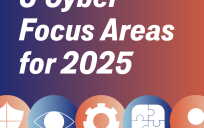Hooper: Mr. Vaughn, what we are dealing with here is a perfect engine, an eating machine. It’s really a miracle of evolution. All this machine does is swim and eat and make little sharks, and that’s all. Now, why don’t you take a long, close look at this sign.
[refers to the graffitied billboard]
Hooper: Those proportions are correct.
Mayor Vaughn: Love to prove that, wouldn’t ya? Get your name into the National Geographic.

Many of us have seen the film that helped put director Steven Spielberg on the map. The 1975 classic, Jaws, set in the beachside community of Amity Island, chronicles the perils one group of men faces as they track down a killer shark like no other. Wrought with suspense and edge-of-your-seat trepidation, the local authorities find themselves learning the magnitude of the situation at hand – trying to figure out the best way to handle it.
That’s exactly how I felt when appointed as lead Section 508 Coordinator for the Veterans Health Administration (VHA), presented with the gargantuan task of resolving more than 1.5 million (and growing) Section 508 accessibility issues.
At this juncture of my career, it was hands down the largest project I had undertaken. With an indefinite scope and broad sprinkling of these issues across more than 250 VA websites, I could tell this shark had indeed done lots of swimming, eating and producing of littler sharks in every corner of our content management system.
I was going to need a bigger boat.
While it would be too exhaustive to list all of the types of accessibility issues here, I will say that many fell into the following categories: missing or inaccurate alt text, disproportionate color contrast ratios, improperly tagged tables and non-conformant social media feeds.
Adding to the complexity of web-related errors, a soaring number of PDF documents were also non-conformant. Most of these documents suffered from missing tags (empty tag trees), non-sequential logical reading order, missing or inaccurate alt text and improper or missing tags for very complex tables. To make matters worse, many of the PDF documents I surveyed were the much dreaded ‘scanned image’ file which makes it almost, if not impossible, for optical character recognition (OCR) to process the textual and structural components.
I found more little sharks inasmuch that some of the websites in our portfolio had republished the same documents – some several times over. Other sites had uploaded non-compliant documents authored by other federal agencies onto va.gov servers which only added to our 508 headache.
So, what did we do, and how did we do it?
We obtained leadership backing in the form of an official memorandum enforcing Section 508 compliance across the Veterans Health Administration. That document quite literally became the “fishing license” we needed to attack those issues. With an ambitious timetable, recipients of this memo knew the administration was serious about better positioning VA’s websites as best-in-class resources for accessible health care.
With a renewed partnership, VHA and VA’s Section 508 office developed a comprehensive training program to equip our field-based web content managers with the knowledge and skill necessary to perform remediation work. We offered classes on a rolling basis. A dedicated intranet portal served as a one stop resource for all things accessibility. Web managers received a monthly scanning report identifying all of the Section 508 issues on their site(s). It also identified non-conformant PDF documents.
Our leadership provided support that funded work on a PDF remediation contract to help offset the web manager workload for extensive and complex documents.
We’ve cast a wide net identifying and remediating thousands of PDF documents and webpages, eliminating 699,000+ issues.
There’s still a long road ahead and more work to be done, but we’re making incredible progress
We’re reframing the Section 508 dialogue at VA by educating our employees, adjusting agency policy to comply with the Revised Section 508 Standards and other accessibility best practices. VHA Digital Media has already begun taking aggressive steps to help safeguard the progress we’ve made, but more importantly, to ensure that VHA information in the public domain remains accessible.
We’re also developing a custom Application Programming Interface (API) prototype that integrates with our agency’s content management system. Broadly speaking, this API will run when a web manager initiates the workflow process in an attempt to publish new content to the production environment, immediately assessing the page or document for conformance with Section 508 requirements. This is an exciting step forward in what I might call “sustainable access.”
Our mission at VA is to fulfill President Lincoln’s promise “To care for him who shall have borne the battle, and for his widow, and his orphan” by serving and honoring the men and women who are America’s veterans. Together, we continually reform and improve the online end-user experience for our veterans who depend on the availability and interoperability of assistive technologies to access the health care information they need.
The key takeaway is this: don’t be afraid to meet accessibility head on. It may well indeed be a long, involved process to “dig out,” but the cause is absolutely worth it. It’s not just a law: it’s the right thing to do. Together, as civil servants, we can make a difference.
Blake Scates is part of the GovLoop Featured Contributor program, where we feature articles by government voices from all across the country (and world!). To see more Featured Contributor posts, click here.





Leave a Reply
You must be logged in to post a comment.